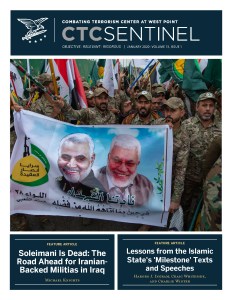From the Editor
The January 3, 2020, U.S. drone strike that killed Islamic Revolutionary Guard Corps-Quds Force commander Qassem Soleimani and Kata’ib Hezbollah leader Abu Mahdi al-Muhandis at Baghdad International Airport will likely have consequences that reverberate across the region and beyond for years. In our first feature article, Michael Knights focuses on the potential consequences for Iraq. He writes that the removal of Soleimani and al-Muhandis, “in combination with resistance from protestors, religious leaders, and the international community, could slow or stall the consolidation of [Tehran-backed] militia power in Iraq.” Ariane Tabatabai assesses that although Soleimani “was perhaps unparalleled in his ability to advance Iranian national interests as viewed by the regime,” the Quds Force is “unlikely to change its modus operandi significantly and that the new Quds Force commander, Esmail Qaani, is likely to ensure a smooth transition.”
In our second feature article, Haroro Ingram, Craig Whiteside, and Charlie Winter—the authors of the soon-to-be-published book The ISIS Reader: Milestone Texts of the Islamic State Movement—“present three frames through which to understand the [Islamic State] movement’s ability to navigate through spectacular highs and crippling lows.”
Our interview is with Rob Saale, who between 2017 and 2019 was the director of the U.S. Hostage Recovery Fusion Cell, an interagency group housed at the FBI. Gina Vale examines a collection of 24 internal Islamic State documents obtained by U.S. military forces operating in Iraq and Syria and declassified through the Combating Terrorism Cen-ter’s Harmony Program. She writes that the documents indicate “the Islamic State sought to translate citizens’ compliance with pious ideals into long-term acceptance of the group’s ideological legitimacy and governing authority.” The full collection of documents, including English translation, is now available on the CTC’s website.
Paul Cruickshank, Editor in Chief
 Skip to content
Skip to content

